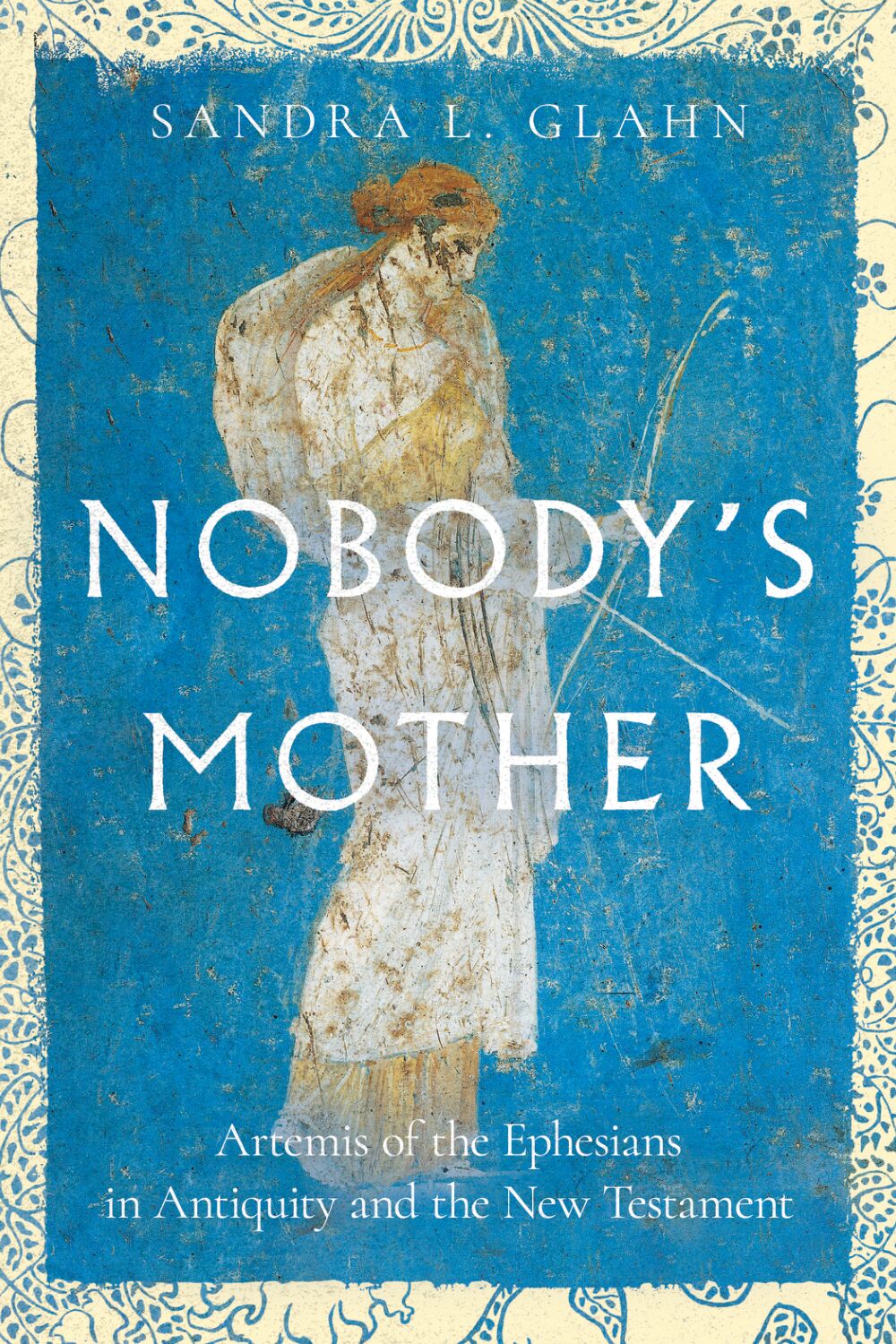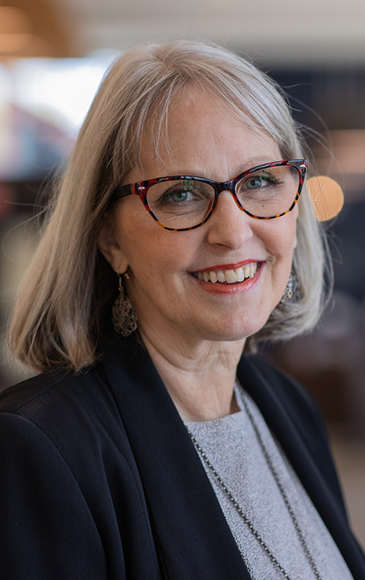A Conversation on Greco-Roman Mythology and New Testament Studies with Sandra Glahn
Sandra Glahn is a one-of-a-kind scholar with expertise in New Testament studies as well as in media and worship. Her new book Nobody's Mother digs deep into the evidence we have about the ancient Greek goddess Artemis of the Ephesians from both biblical and classical sources in order to bring into focus Paul's teaching in 1 Timothy.
There are lots of misconceptions about Greek gods and goddesses, aren't there? How should Christians approach the study of Greco-Roman mythology?
Sandra Glahn: Sometimes people twitch when I start telling Artemis's back story —as if even uttering the names Artemis, Zeus, Hera, Leto, and Apollo is somehow disloyal to Christ. But the goal is to exalt Christ! And of course studying is not the same as embracing.
The biblical authors certainly didn't shy away from Greek mythology. Luke (a Gentile) in writing Acts, names Artemis in Ephesus multiple times, as well as the diopet or "Zeus-fallen" image (19:35), often rendered into English as the "image that fell from heaven." Luke also mentions (Acts 28:11) a ship with the Dioscuri (the sons of Zeus, namely the twin brothers Castor and Pollux) for its figurehead. And Luke recounts how the people in Lystra mistook Barnabas and Paul for gods (Acts 14:8-18). They thought Paul was Hermes, "because he was the chief speaker" (v. 12)—Hermes being the herald of the gods. Zeus, Hermes, Artemis, and the Dioscuri are all characters in Greek legend named in the New Testament. Many of these characters have both Greek and Roman names due to syncretism. That's why the King James Version translates the Greek name "Artemis" as "Diana," the Roman version.
A general understanding of the pantheon and their minions can be helpful for understanding the cultural setting of some New Testament sites, especially places like Ephesus, Crete, and Cyprus—the birthplace of Aphrodite. The name "Epaphroditus" (Phil. 2:25-30, 4:18) means "belonging to Aphrodite," and Artemas (Titus 3:12) means "follower of Artemis." Where did the noted Christian teacher Apollos get his name? And what might these details reveal about their backgrounds?
You've spent considerable time in the Mediterranean world yourself, including Ephesus. How has such "feet on the ground" time enriched your scholarship?
SG: More than two decades ago, my husband and I celebrated a big anniversary by taking a cruise on an old boat in the Mediterranean, which included a stop in Ephesus. We had never been there, nor did I know much about the city itself. But I was familiar with the assertions of some scholars who said Ephesus had a "pro-woman feel" to it that related to Artemis and the Amazons there. I'd also heard lectures and read reviews that completely discounted any such Amazonian presence. So imagine my surprise when I stood in Ephesus, feet on the ground, staring up at stone reliefs on a temple dedicated to the emperor Hadrian—and its art featured Amazon women. Our guide said these reliefs told the city's story, and Amazon women played a key role. I wondered if the stonework dated to centuries before the earliest Christians in Ephesus. But when I learned that they dated to about 138 AD—within a century of Paul and Timothy—I knew I had to explore the connection for myself. So it was "feet on the ground" that started this whole project.
This summer, I was with a group visiting the museum in Ephesus. And I noticed that a model of Artemis's temple that replaced a previous iteration (which looked very Roman) looked much more Asian. Seeing it told me something I had not read in journals—about a shift in how archaeologists envisioned the structure. This matched a shift I'd seen in the literature, which has emphasized less Roman and more Hittite and Anatolian influences.
Back when most of us used to browse in libraries, we'd find what we could never discover online: entire sections of books on similar topics. And now going to a place like Ephesus or the Holy Land in person has that same effect for me. I make connections I could never put together simply by reading, looking at inscriptions, or even interviewing other scholars. I love to be there.
Your book is remarkable for unapologetically blending autobiographical reflections with deep-dive research into antiquity. What are the upsides and downsides, the promise and the peril, of doing that, in your experience?
SG: As a journalist on a press junket that took me to Jerusalem, I stood at the entrance to Yad Vashem, the Holocaust Museum. Karl, an Israeli guide who accompanied our Gentile group for the entire trip, had us sit near the area that honored The Righteous Among the Nations—non-Jews who took great risks to save Jews during the Holocaust. There Karl told us a harrowing tale of a little boy who barely escaped death at the hands of the Nazis in Poland. Then he told of a little girl who hid with her mother and baby sister in the muck of an outhouse hiding from the Nazis. The baby died of suffocation in the arms of her mother. But the little girl lived. And both she and the boy relocated to Israel. And they grew up and married. And they had a baby named Karl.
He told us he could not accompany us any further—or he would end up curled into the fetal position for a week. But he felt it essential that we have a personal narrative on our minds as we considered the millions who died. He did not want us to think impersonally of "those millions" but rather of that boy and that girl and the guide we had grown to love. He felt that by viewing the facts through the grid of that story, we would be more ethical "tourists."
That experience has deeply affected my approach to communicating facts.
I draw comfort from knowing that some of the scholars I most admire were unafraid of storytelling. J. R. R. Tolkien and Dorothy L. Sayers and C. S. Lewis (all world-class scholars) come to mind. In her essay titled "Is It Good Enough for Children?" Madeleine L'Engle wrote, "Facts are fine; we need facts. But story takes us to a world that is beyond facts, out on the other side of facts. And there is considerable fear of [that] world." She's not wrong about the fear. But The Greatest Story Ever Told is not a three-point sermon with propositions and citations. It's told as narrative and history and epistle and apocalypse and poetry and parable.
Sometimes people think that if a scholar introduces research starting with his or her own story, the research is tainted by a lack of objectivity. Yet it's usually something within the scholar that has led him or her to pursue a particular academic focus. Being self-aware is a far better check on bias than believing yourself to be objective. Sure, we need vetting, fact-checkers, editors, and anonymous readers—we verify the research. But we enter it through story and, I would argue, more easily receive it through story.
So, a downside is that one's work can be relativized and compartmentalized by others. But an upside is that most people find the work more interesting—which means they're more likely to actually read it! And more importantly, our applications will have more humanizing elements because we peer at the data through the lens of our humanity, unseparated from the facts.
What are your highest hopes for what readers will get from the book? What do you worry they might misconstrue?
SG: I pray, I literally do pray, that the work will set people free. I hope they will see that God's pattern book has a wide range of options for human thriving and that, as important as parenting is, it's not the ideal that the apostle Paul is holding forth for everyone—especially for every woman. I hope people will see that 1 Timothy does have timeless application, but not necessarily the application we have often thought Paul was making.
Also, by the way, I hope scholars will take inscriptions more seriously. Thousands of them are left unincorporated into our lexicons, though they offer hints about word usage at the time of the earliest Christians. But we've stayed fixated only on the papyri.
As for the trolls, they're already demanding, "Is this book complementarian or egalitarian?" Seriously? The identity of Artemis in Ephesus is neither.
I know you have longstanding and robust practices of mentoring and coaching students beyond the classroom and beyond graduation. What are the secrets (or essential attributes) for a fruitful mentoring relationship?
SG: Many think that an ideal mentoring relationship is a hierarchical interaction in which the wise sage imparts wisdom to the humble grasshopper, who sits ever poised to learn. But mentoring at its best is spiritual friendship. It's breaking bread. It's walking together (literally). It's ministering side by side. And it means both of us assume the role of teacher and learner. For instance, I may do Twitter and Facebook and Instagram and check email and text and use tech all day long, but I'm an immigrant while my students are natives to the world of tech. So they constantly teach me about technology. One set up a Pinterest board for me when my webmaster needed to know what new design themes I needed. I have areas of knowledge my students need, but they have knowledge I need, too. So instead of seeing such relationships as an information dump in which I download all I know onto them, it's vital I see myself as building a lifelong relationship with give and take.
In such relationships, it's also essential to give away power, to pass along opportunities, to invite someone to come alongside. I rarely travel without taking a student or former student with me. If they can co-teach a portion of a lecture with me, all the better. We need to live out the opposite of building platforms that lead to bigger empires that we delude ourselves into thinking are "for the kingdom." Jesus said to live our best righteousness in secret. Decrease your ambition.
You've previously published books for quite a wide range of audiences, from scholarly to general readers. Do you have different practices or approaches you draw upon?
SG: Mostly, I draw on different vocabularies. I got my start as a freelancer writing for a lay audience of infertility patients. Their doctors would refer to pregnancy loss as a "spontaneous abortion" instead of a "miscarriage," and that "a-word" sometimes upset their readers. So the professionals hired me to be a border-walker, to know their jargon and terminology but also to know how their audience would hear their terms and translate accordingly. I have to admit I'm losing my touch, though: for my most recent Bible study, Latte with Luke (AMG Publishers), I had to hire a student reader to flag places where I needed to make my prose more approachable. Yet I can also hear my agent saying he loves a writer who sometimes sends him to the dictionary. That border can be a thin line.
What's next for you? Anything we should watch for from you in the future? What are you looking forward to, either personally or professionally?
SG: I'm intrigued by something I hint at in Nobody's Mother—that the word "widow" in the world of the earliest Christians was broad enough to include a woman who had never married. And that evidence tells us an "order of widows" existed in the early church, complete with an ordination prayer. So that's probably my next journal article, which may make its way into book form.
Also, two colleagues and I recently founded the Visual Museum of Women in Christianity to document women in the visual record of the church. It's already online in beta form but this is a project that requires further international travel and fund raising.
Join IVP Academic's Email List & Discover More Books on the Early Church & Ancient Christianity.
About the Author
This interview originally appeared in the IVP Academic catalog. Sign up to receive the catalog to be the first to discover new academic books and author interviews.





